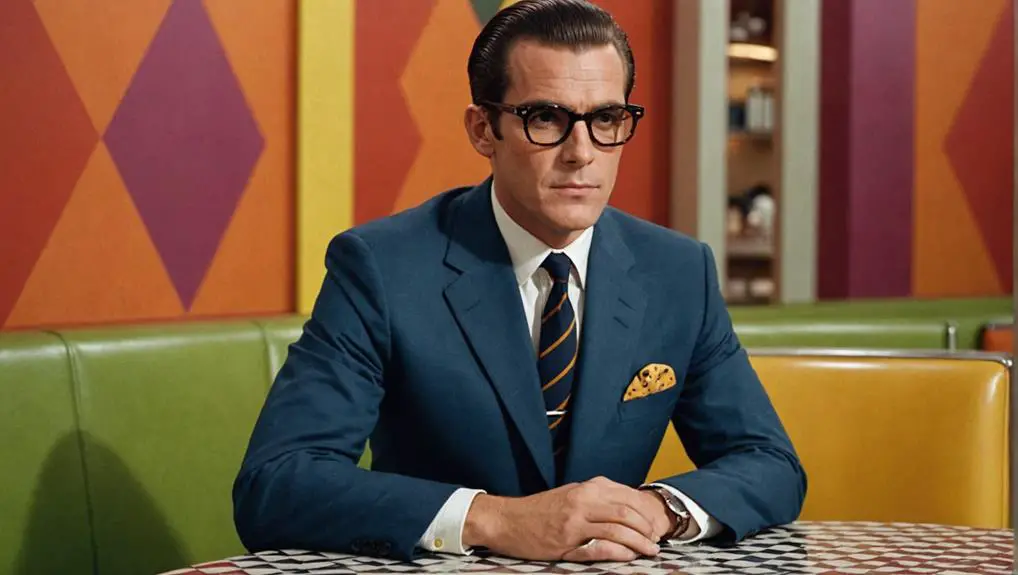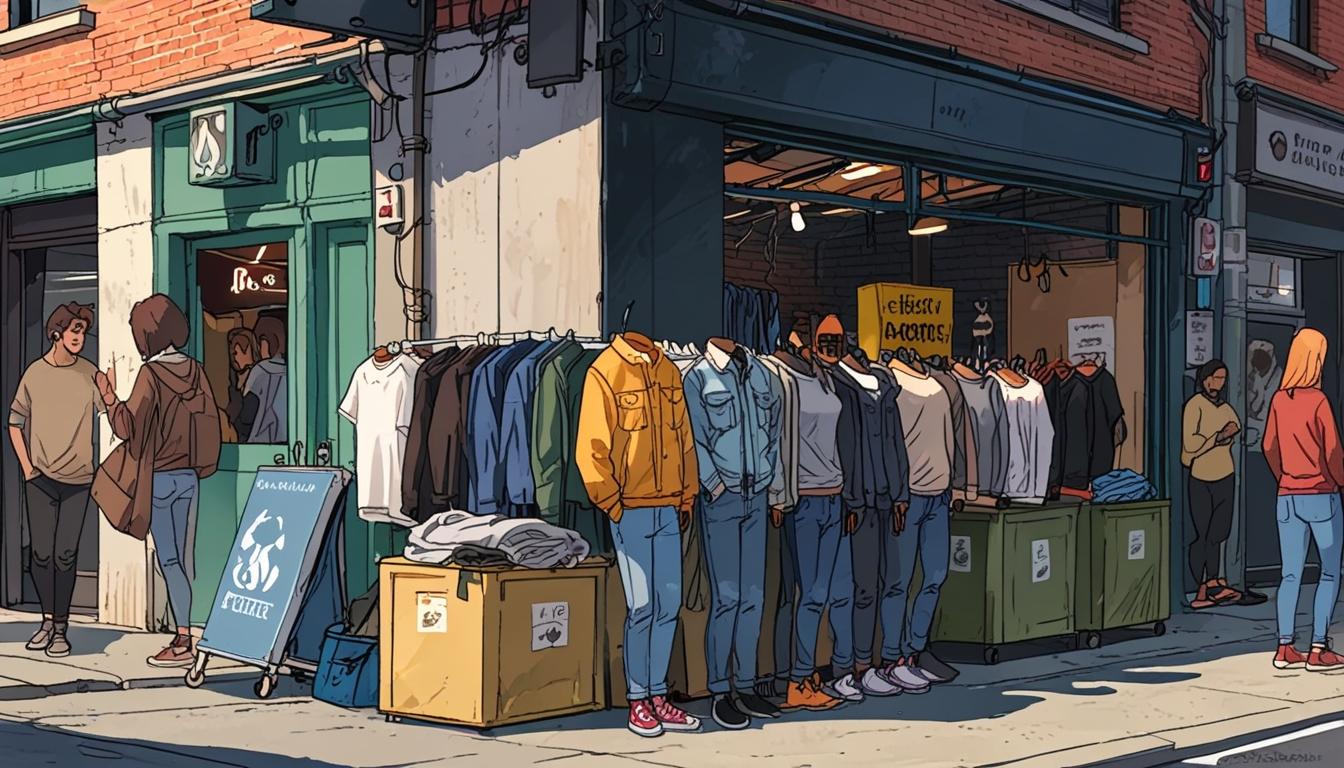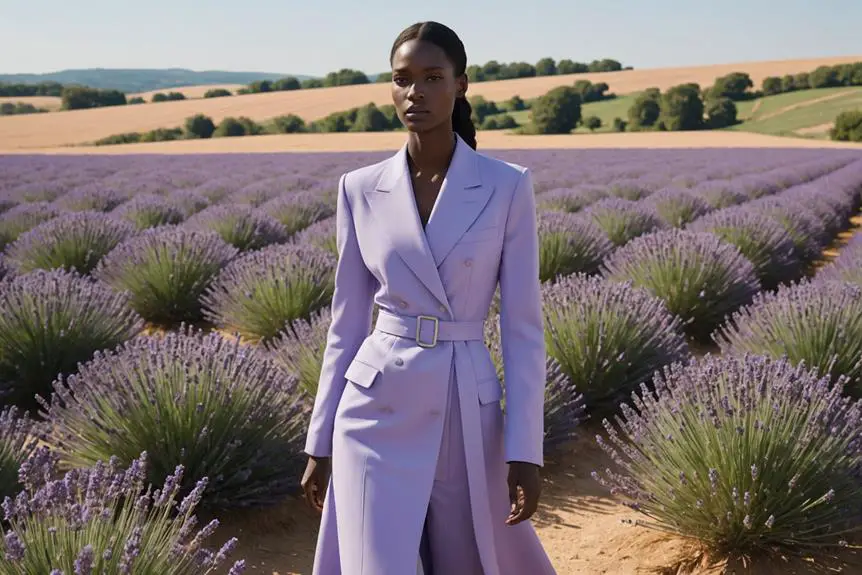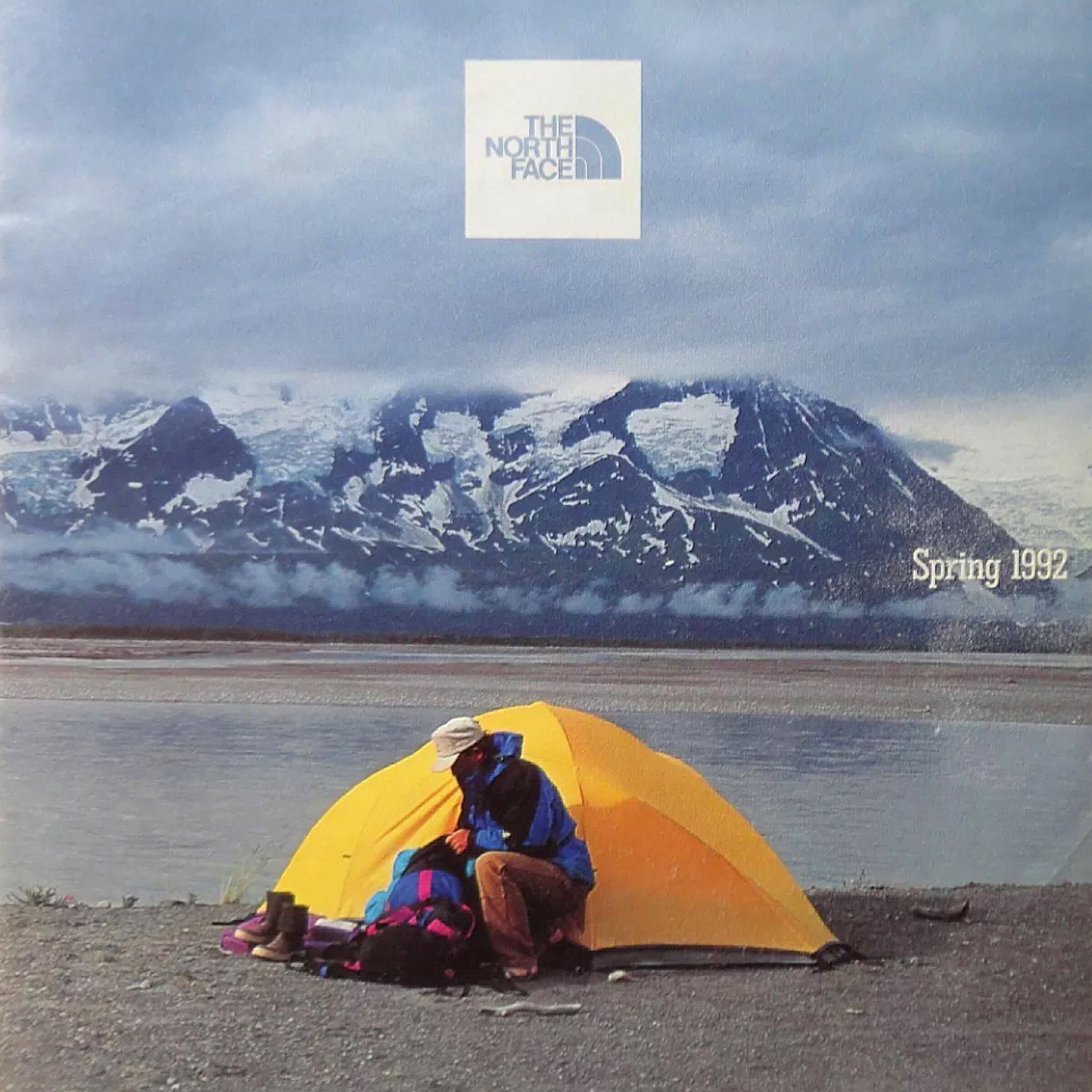Men's glasses in the 1960s were more than just functional eyewear; they were bold fashion statements that reflected personal style. Styles like horn-rimmed glasses, popularized by cultural icons like Buddy Holly, showcased a mix of artistry and functionality. Browline glasses combined thick upper frames with lighter bottoms, creating a striking aesthetic. Vibrant colors also became a trend, emphasizing individuality. Brands like Ray-Ban and American Optical offered models that continue to resonate today. This transformation in eyewear mirrored broader cultural shifts, hinting at the significant role glasses played in personal identity and expression during this vibrant decade.
Overview of 1960s Eyewear
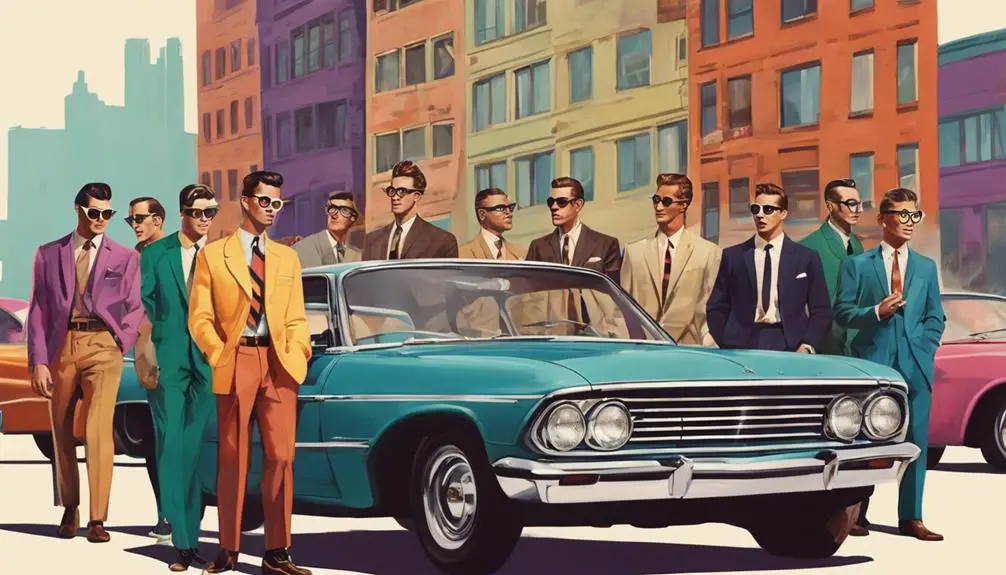
In the 1960s, eyewear underwent a remarkable transformation, evolving from mere medical instruments into bold fashion statements. This decade marked a significant shift in how people perceived glasses, particularly among men. Vintage styles like horn rimmed glasses made a major impact, characterized by their thick frames that provided both durability and flair. Icons such as Buddy Holly popularized these frames, giving them a cultural resonance that would last for decades.
Among the standout styles, browline glasses emerged as a favorite choice for men. The Ray-Ban Clubmaster, with its distinctive thicker upper frame, became synonymous with retro sophistication, appealing to those who wanted to make a statement without sacrificing functionality. You'd notice how these glasses complemented a range of outfits, from casual to formal, enhancing your overall look.
In addition to these designs, bold colors like green, blue, and pink started to find their way into men's eyewear, further emphasizing the era's commitment to self-expression. This period was pivotal in redefining glasses as not just a necessity but as integral elements of personal style, paving the way for future trends in eyewear.
Horn Rimmed Glasses
Horn rimmed glasses epitomize the bold style shifts of the 1960s, seamlessly blending functionality with artistic expression. Originally crafted from genuine horn or shell, these eyeglass frames evolved into popular models made from plastic and metal, making them accessible to a wider audience. The square and rectangle shapes dominated the fashion scene, with black and tortoise colors leading the trend.
During this transformative era, horn rimmed glasses became synonymous with cultural icons, most prominently Buddy Holly, who greatly influenced their popularity. As you donned a pair of these vintage glasses, you not only adopted a fashionable accessory but also an emblem of the time's progressive spirit. The retro and vintage aesthetics of these styles allowed wearers to make bold statements that were both cerebral and stylish.
However, as the 1970s ushered in new eyewear trends, the once-dominant horn rimmed glasses began to fade from the mainstream. Today, these frames are celebrated for their nostalgic charm, often sought after by those who appreciate their historical importance and classic design. Embracing horn rimmed glasses allows you to connect with a vibrant past that continues to influence modern fashion.
Cat Eye Glasses
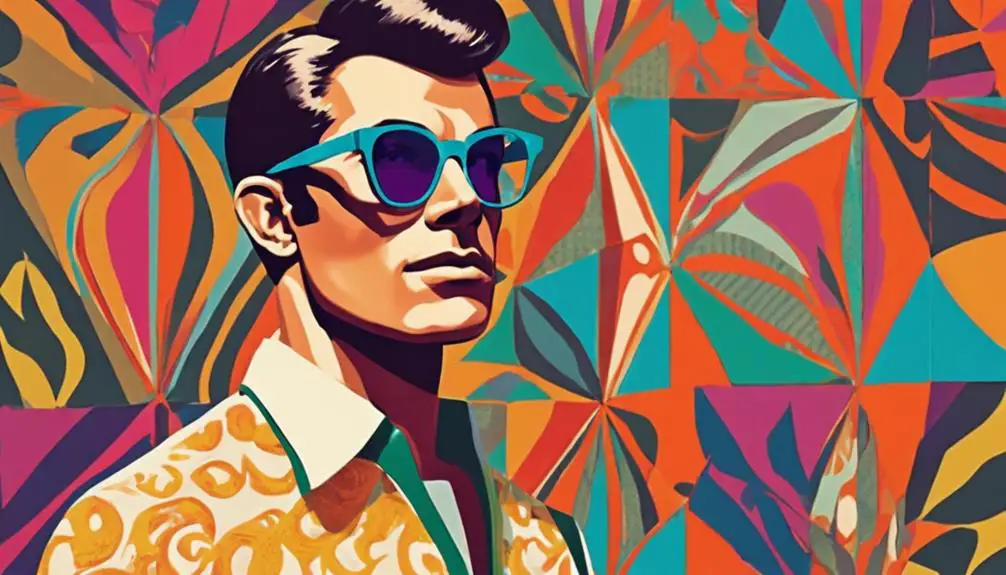
As horn rimmed glasses made their mark in the 1960s, another eyewear style emerged, enchanting the imagination of women everywhere: cat eye glasses. Known for their distinctive upswept corners, these glasses offered a playful yet edgy aesthetic that perfectly encapsulated the spirit of the decade. You'd find cat eye glasses in an array of colors and creative designs, often embellished with pearls and rhinestones, showcasing the vibrant fashion trends of the time.
The vintage eyewear scene flourished with cat eye frames, particularly from French manufacturers, often stamped with "Frame France." This emphasis on design innovation led to numerous radical styles that stood out in a crowded market. As cat eye sunglasses gained traction, they became vintage classics, further elevating their status as cultural icons.
The rise of cat eye glasses in the 1960s didn't just influence women's fashion; it contributed greatly to the cultural iconography of the era. Their unique silhouette and daring embellishments inspired modern eyewear designs, solidifying their place in fashion history. Today, cat eye glasses remain a reflection of the bold creativity and individuality that defined the 1960s.
Browline Glasses
Embodying a blend of sophistication and boldness, browline glasses emerged as a defining eyewear trend in the 1960s. With their thicker, darker upper frames and lighter lower frames, these glasses combined plastic and metal for a unique aesthetic appeal. This design not only accentuated the natural brow but also conveyed a fashionable, intellectual vibe that many men sought.
Consider these key features of browline glasses:
- Thicker, darker frames that demand attention
- A versatile style that pairs well with various outfits
- Vintage appeal, making them a sought-after collectible today
Popular models like the Artcraft Clubman and Ray-Ban Clubmaster dominated the market, appealing to men who wanted to make a statement. The distinctive shape of browline glasses allowed wearers to express their personality while still maintaining an air of sophistication. Authentic 1960s pieces are now rare collectibles, as the aging of plastic and metal components adds to their allure. The style even saw a resurgence in the 2000s, as vintage fashion trends became central to modern aesthetics. Browline glasses remain an iconic representation of masculine elegance from this transformative era.
Iconic Brands and Models
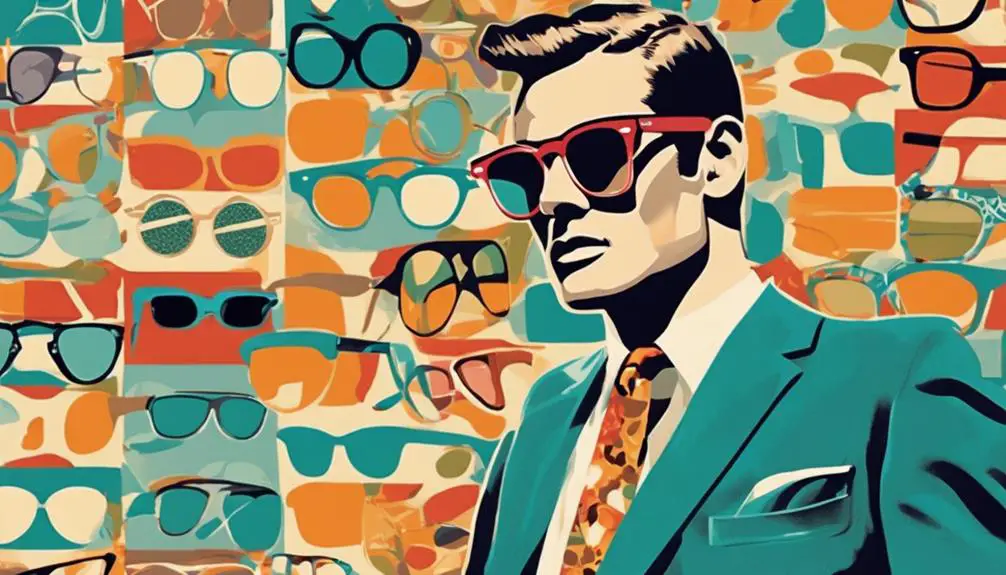
Browline glasses paved the way for a variety of iconic brands and models that defined men's eyewear in the 1960s. American Optical emerged as a leader, showcasing classic designs like the Stadium and Manhattan models that epitomized sophistication. These frames became synonymous with a polished image, appealing to men who valued style.
The Ray-Ban Clubmaster, another browline style, captured the zeitgeist with its distinctive mix of plastic and metal. Its sleek lines attracted a fashion-conscious audience, making it a popular choice in urban settings. Meanwhile, Moscot's Lemtosh gained cult status, celebrated for its unique round shape. The eyewear was favored by celebrities, which amplified its desirability among the masses.
Shuron Rondean glasses offered a vintage appeal, boasting retro designs that resonated with men seeking classic aesthetics. These frames exuded an aura of timelessness that many found irresistible. Finally, Tart Arnel stood out for its stylish frames, reflecting the bold fashion trends of the decade. Together, these brands and models not only defined the era but also shaped the ongoing narrative of men's eyewear, leaving a lasting legacy.
Color Trends in Eyewear
While the 1960s are often remembered for their groundbreaking fashion movements, the color trends in men's eyewear played a crucial role in expressing individuality and style. Vibrant colors like green, blue, pink, yellow, and red became staples, allowing you to showcase your personal style. The shift from metal frames to plastic frames opened the door for bolder designs and a wider palette of hues.
- Dark winter colors contrasted with light summer pastels
- Cat eye sunglasses emerged with creative embellishments
- Eyeglasses became coordinated with outfits, highlighting color coordination
This era saw eyeglasses as more than just functional items; they became fashion statements. Popular models not only matched outfits but also reflected the wearer's mood and personality. The introduction of cat eye sunglasses, with their striking color combinations and rhinestone accents, further illustrated the trend toward playful experimentation in eyewear. As men began to embrace these dynamic color trends, eyewear evolved into an essential element of fashion, affirming its place in the broader narrative of 1960s style. The choices you made in eyewear during this decade certainly shaped how you expressed your individuality.
Rare and Vintage Styles
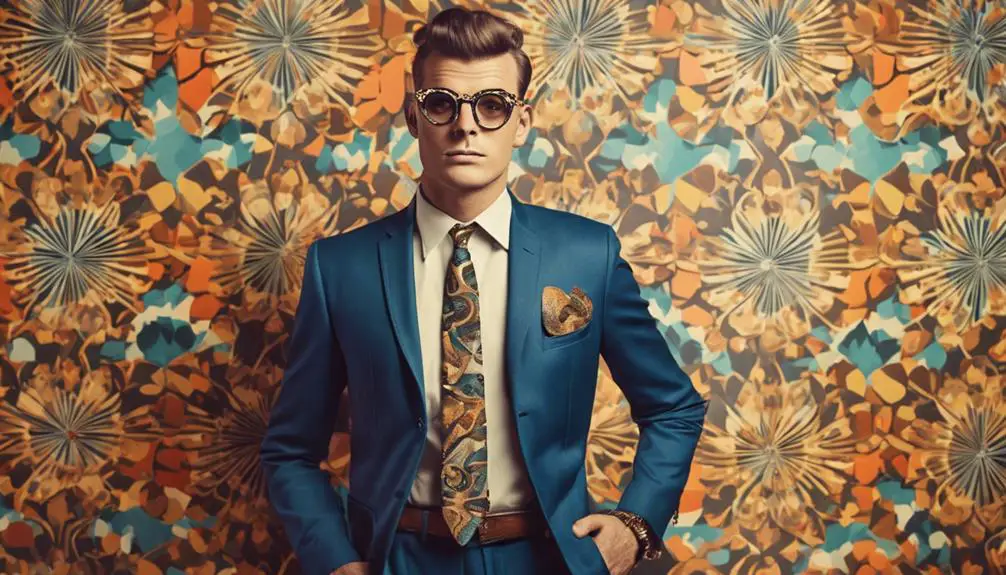
The allure of rare and vintage styles in men's eyewear during the 1960s captivates collectors and fashion enthusiasts alike. Among the standout pieces, the Ray-Ban Clubmaster exemplifies the era's unique fusion of boldness and sophistication. You'll find that browline glasses, like the Artcraft Clubman, dominated the scene with their thicker upper frames, offering a striking contrast to the delicate lower sections. These designs not only made a fashion statement but also reflected the cultural zeitgeist of the time.
Horn rimmed glasses, originally crafted from genuine horn, shifted to plastic and acetate, becoming a favorite for their serious and edgy look—think Buddy Holly's iconic style. Vintage mens glasses from this period, especially rare vintage styles, have become highly sought after. Limited edition finds, such as the DeadStock Arnel Marine Optical horn rim black eyeglasses, often command prices exceeding $500, illustrating their historical significance.
As the vintage eyewear market continues to grow, collectors actively seek these unique pieces, from cat eye sunglasses to classic horn-rimmed designs, ensuring that the legacy of 1960s men's eyewear remains alive and well.
Cultural Influence on Eyewear
Eyewear in the 1960s transformed from mere utilitarian items into essential fashion statements, largely driven by influential cultural figures. As you look back, it's clear that style was no longer just about function; it became an expression of identity. The rise of musicians and actors popularizing bold frames like horn rimmed and browline glasses played a pivotal role in this shift. You'd see:
- A blend of metal and playful colors in glasses frames.
- The emergence of styles that reflected the era's counterculture movements.
- An increasing demand among young men to emulate their favorite stars.
Celebrities like Buddy Holly set the trend, making these glasses a must-have accessory. They weren't just eye protection; they were a symbol of rebellion and individuality. Fashion magazines showcased eyewear as a key accessory, emphasizing that your glasses should match your outfit and personality. This encouraged a creative exploration of styles, with brands responding to the youthful market by introducing unique designs. The 1960s marked a significant cultural shift, transforming glasses into powerful style statements that encapsulated the vibrant spirit of the time.
Collecting 1960s Glasses
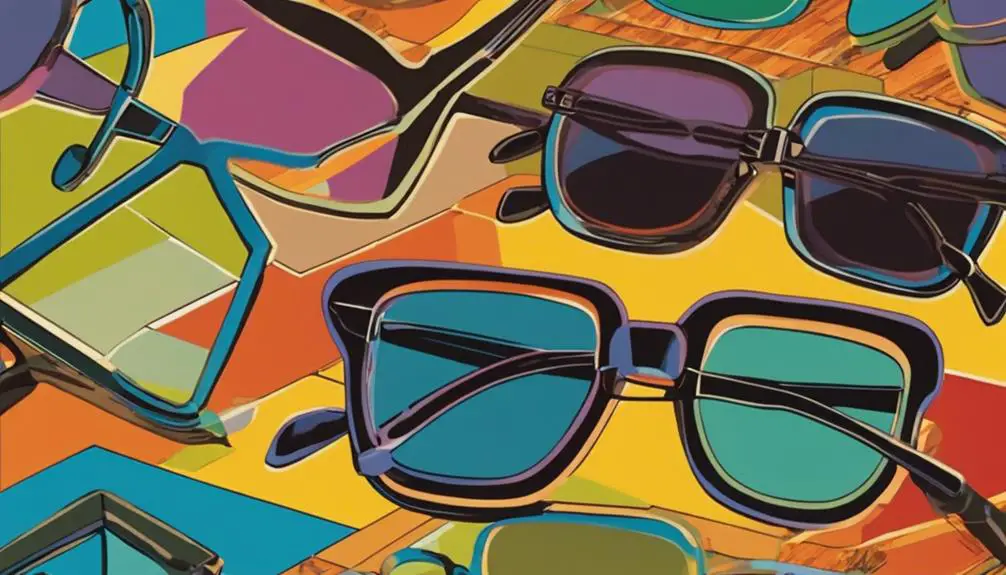
In the vibrant world of vintage fashion, collecting 1960s glasses offers a unique glimpse into an era defined by bold style and cultural shifts. You'll find iconic designs like browline glasses, horn-rimmed styles, and cat-eye frames that capture the essence of Mid Century aesthetics. Brands like American Optical and Ray-Ban produced some of the most coveted pieces, particularly the Artcraft Clubman and Ray-Ban Clubmaster, which are now highly sought after for their historical significance.
When you immerse yourself in collecting 1960s glasses, prices can range dramatically. Rare finds like the American Optical Tournament sunglasses might fetch around $695, while more common styles can be yours for $50 to $300. Remember, condition is key; items in good condition or classified as New Old Stock (NOS) will attract greater interest and higher prices among collectors.
As sustainable fashion gains traction, the appeal of 1960s glasses as unique style statements grows. Embracing these vintage eyeglasses not only connects you to the past but also allows you to make a distinctive fashion statement in the present. So, whether you're a seasoned collector or a newcomer, the hunt for these pieces can be both rewarding and stylish.
Frequently Asked Questions
What Were the Popular Glasses in the 1960s?
In the 1960s, you'd notice browline glasses and horn-rimmed styles dominating fashion. Vibrant colors and playful designs emerged, reflecting the era's spirit. Timeless classics like Ray-Ban Clubmaster became essential accessories for trendsetters of the time.
What Did Glasses Look Like in the 1950s?
In the 1950s, glasses featured bold horn-rimmed styles, often in black or tortoise shell. Square shapes dominated, projecting an intellectual image, while browline glasses became popular, reflecting the era's expressive and colorful fashion trends.
What Were the 70S Glasses Called?
In the 70s, glasses styles, like oversized sunglasses, retro aviators, and browline frames, became popular. You'd notice bold colors and geometric shapes, reflecting the decade's eclectic fashion and emphasizing eyewear as a significant accessory.
Did They Wear Sunglasses in the 60s?
Yes, sunglasses were popular in the 1960s. You'd see them everywhere, embraced not only for protection but also as bold fashion statements. Styles varied widely, influencing trends and becoming essential accessories for many.
